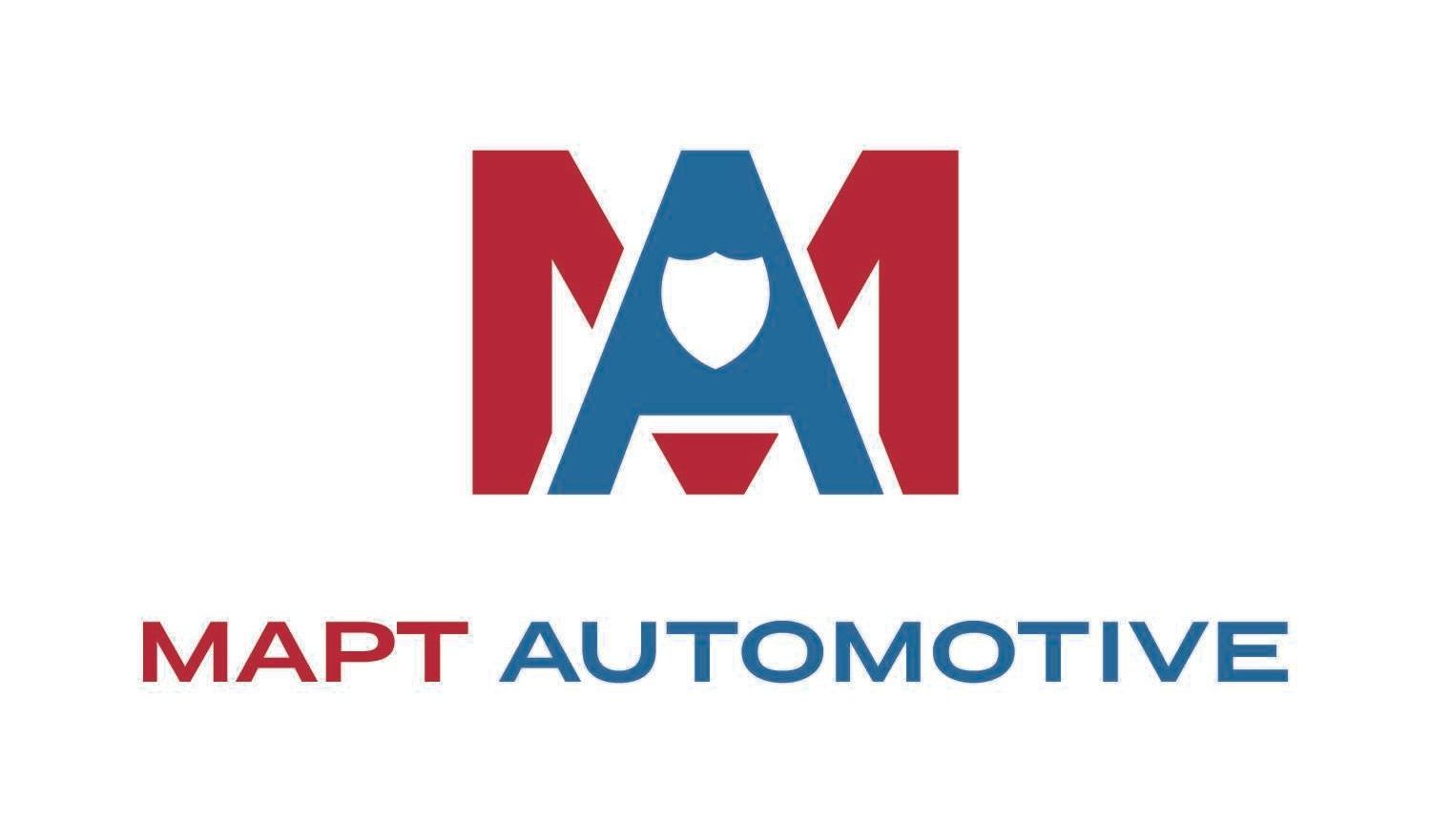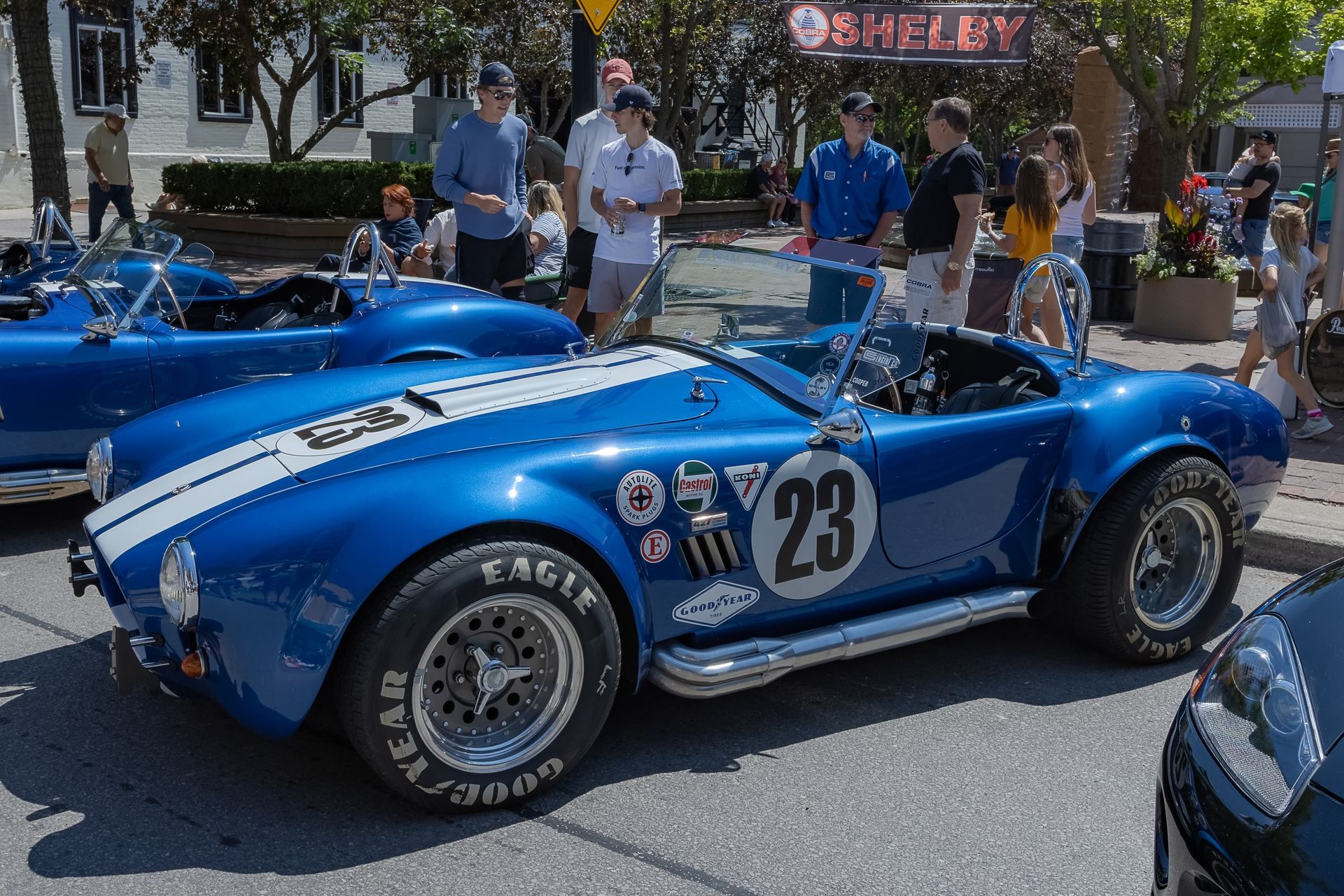1950s Sports Car Maintenance
Here 5 of the top 1950s Sports Cars to consider for your collection, as well as the possible issues each makes and model had back then and still do today. If you have one of these or buy one of these, consider Mapt Automotive as your premier sports card mechanic.

1953 Chevrolet Corvette C1: America’s First True Sports Car
Step back in time with the
1953 Chevrolet Corvette C1, the car that kicked off an American legend. With only
300 units ever produced, owning one of these beauties isn’t just buying a car—it’s becoming a part of history. Sleek, stylish, and packed with classic appeal, the '53 Corvette is the car that started it all.
Performance Specs
- Engine: The Corvette C1 was powered by the Blue Flame 235 cu in inline-six engine, paired with triple Carter carburetors, delivering 150 horsepower. It might not have the muscle of later Corvettes, but for its time, this engine was a revelation.
- Quarter-Mile Time: Clocking in at around 17.9 seconds, the Corvette C1 was no drag strip demon, but its timeless style more than made up for it. Plus, it's a car made for cruising and looking good while doing it.
- Transmission: Equipped with a 2-speed Powerglide automatic transmission, it delivered a smooth, relaxed drive—a true American cruiser for open roads.
Design & Style
- Iconic Fiberglass Body: The first production car in America with a fiberglass body, the C1’s design made waves for its lightweight construction and futuristic appearance. This car was a bold statement, signaling that America could play in the sports car arena.
- Color Options: The original 1953 Corvette came exclusively in Polo White with a Sportsman Red interior, a combination that screamed luxury and attention to detail. While color options were limited, it’s a showstopper even today.
- Convertible Only: The C1 was only available as a convertible, with its clean, uncluttered lines and low-slung stance that give it a classic look. Imagine cruising down the highway with the top down—instant nostalgia and cool factor!
Why Buy in 2024-2025?
- Exclusivity: With only 300 ever made, owning a ’53 Corvette is the ultimate bragging right. It’s a rare collectible that stands out in any garage or car show. Prices for these cars continue to rise, making it not just a head-turner, but a solid investment.
- Timeless Appeal: The C1’s design is a perfect blend of 1950s optimism and modern sports car allure. With its bullet-style headlights, bold grille, and sporty wire wheels, it captures the essence of post-war Americana.
- Cultural Icon: This car isn’t just a classic—it’s a cultural icon. Owning a C1 Corvette is like owning a piece of America’s love affair with the open road. And with interest in classic cars on the rise for 2024 and 2025, now’s the time to own one.
Issues commonly seen with the Chevy Corvette C1 1953
Engine Issues: The early Corvette C1s came with the Blue Flame inline-six engine, which was underpowered compared to later V8 models. The engine had issues with overheating and oil leaks, and the carburetors were prone to failure.
Transmission Problems: The two-speed Powerglide automatic transmission wasn’t very robust and could wear out quickly, requiring frequent servicing or replacements.
Electrical Systems: Wiring issues and poor grounding were common, often leading to malfunctioning lights and electrical accessories.
Fiberglass Body Cracks: The C1's innovative fiberglass body was prone to cracking and stress fractures over time, especially around the mounting points.
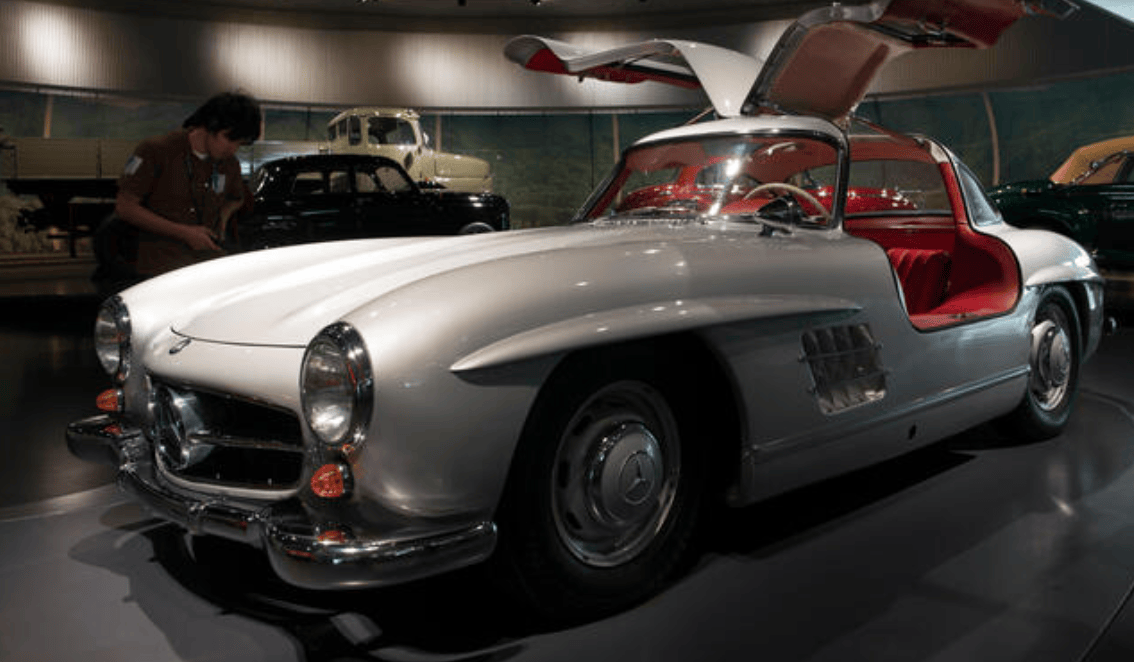
1954 Mercedes-Benz 300s Bullwing
The
1954 Mercedes-Benz 300SL Gullwing isn’t just a car—it’s a marvel of engineering and design that set the standard for performance vehicles around the globe. Known for its iconic gullwing doors and revolutionary fuel injection system, this car was light years ahead of its time. If you’re looking for exclusivity, power, and a piece of automotive history, the 300SL is the ultimate investment.
Performance Specs
- Engine: Under the hood of the 300SL is a 3.0-liter inline-six engine with a groundbreaking direct fuel injection system, delivering an impressive 215 horsepower. This was a game changer in the 1950s and helped push the limits of what production cars could do.
- Quarter-Mile Time: With a blistering quarter-mile time of 16.2 seconds and a top speed of 160 mph, the 300SL wasn’t just fast for its time—it’s still a contender on modern roads. Its lightweight chassis and high-revving engine meant it could outperform many cars of the era.
- Transmission: Paired with a 4-speed manual transmission, this setup gives you control and engagement behind the wheel, perfect for high-speed cruising or precision driving on twisty roads.
Design & Style
- Gullwing Doors: The most iconic feature of the 300SL is its gullwing doors—a unique design that still turns heads today. These doors weren’t just for show; they were created to allow easier access to the car’s space frame, which had high sills.
- Lightweight Construction: Built using a tubular space frame, the 300SL was light and strong, making it a pioneer of performance design. This focus on weight reduction helped it achieve its top speeds.
- Color Options: Originally, the car was available in classic colors like Silver Metallic, though buyers could also opt for more striking shades like Fire Engine Red and Deep Black. Each paint job is complemented by the luxurious interior, often finished in leather with refined details.
- Aerodynamic Shape: Its sleek, streamlined body was designed to cut through the air with minimal resistance, helping the 300SL achieve its supercar-like speeds. The long hood and fastback rear gave it a look that was both graceful and aggressive.
Why Buy in 2024-2025?
- Exclusivity & Value: With only 1,400 Gullwings ever produced, this car is as rare as it is valuable. Owning one is like holding onto a masterpiece, with prices consistently reaching over $1 million at auction. The market for classic cars, especially icons like the 300SL, is only growing in 2024 and 2025.
- Timeless Appeal: The design of the 300SL is one that transcends generations. It remains one of the most beautiful cars ever built, blending performance and elegance in a way that modern supercars still admire.
- Racing Heritage: Born from Mercedes-Benz’s racing success, the 300SL brings track performance to the street. It’s not just a pretty face—it was built to win races, and its legacy in motorsports makes it even more desirable for collectors.
- Investment Potential: As the car that redefined what a production vehicle could be, the 300SL is considered one of the best investments in the classic car world. Prices are predicted to rise even further in the coming years, making it an attractive proposition for collectors.
Owning a 1954 Mercedes-Benz 300SL Gullwing is like owning the blueprint for modern supercars. Its stunning design, advanced technology, and racing pedigree make it a must-have for any serious collector. If you’re looking for the ultimate combination of style, speed, and history, this is it.
The lightweight, agile Porsche 356 is a timeless classic. The Speedster variant, in particular, remains a highly desirable collector car for enthusiasts.
Common issues with the 1954 Mercedes-Benez 300SL Gullwing
Engine Oil Leaks: The air-cooled engines in the Porsche 356 were notorious for oil leaks, especially around the valve covers and crankshaft seals.
Electrical Issues: The 6-volt electrical system used in early models was underpowered by modern standards, causing frequent issues with starting and dim lighting.
Transmission Synchro Problems: The early 356 models had non-synchromesh gearboxes, making them difficult to shift smoothly. Even the later synchromesh models could wear down quickly and cause grinding during shifts.
Rust Issues: Like many cars of its era, the Porsche 356 was susceptible to rust, particularly in the lower panels, floor pans, and battery box area.
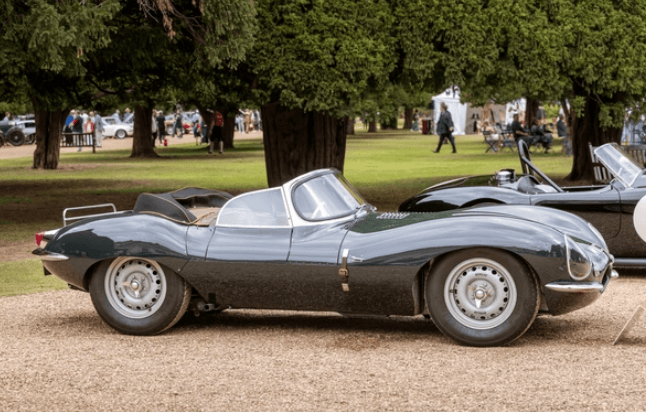
1957 Jaguar XKSS
The 1957 Jaguar XKSS is more than just a car—it's a legend born from the track, transformed into one of the most exclusive and sought-after collector vehicles ever built. With only 16 units produced before a factory fire halted production, the XKSS is a rare piece of automotive history. Its stunning design, race-bred engineering, and celebrity connections (Steve McQueen famously owned one) make it the crown jewel for collectors.
Performance Specs
- Engine: The XKSS is powered by a 3.4-liter inline-six engine, derived from Jaguar’s racing D-Type, producing a solid 262 horsepower. This was serious power in the 1950s, and even today, it holds its own on the open road.
- Quarter-Mile Time: With the performance specs of a race car, the XKSS could cover the quarter-mile in an impressive 15.0 seconds—blazing fast for its time, and still more than enough to thrill drivers today.
- Transmission: The XKSS came with a 4-speed manual transmission, delivering precise, hands-on driving control. It was built for those who appreciate the art of driving, giving you full access to its high-revving engine and race-tuned suspension.
Design & Style
- Race Car DNA: The XKSS is essentially a road-legal version of the legendary Jaguar D-Type, which won the 24 Hours of Le Mans three years in a row. It features the same sleek, aerodynamic design that made the D-Type a force on the track.
- Convertible Roadster: Designed as a two-seat open roadster, the XKSS embodies the perfect balance of raw performance and classic sports car charm. The lack of a roof adds to its exhilarating driving experience, especially with the growl of its powerful engine filling the air.
- Color Options: The XKSS was offered in a few classic Jaguar shades, including British Racing Green, Old English White, and Carmen Red. These colors, combined with its minimalist interior, scream vintage racing luxury.
- Hand-Built Craftsmanship: Every XKSS was meticulously hand-built, giving it an unparalleled level of craftsmanship. The lightweight aluminum body, signature fin behind the driver's seat (a leftover from its racing heritage), and gorgeous wire wheels make it an unmistakable icon.
Why Buy in 2024-2025?
- Rarity & Value: With only 16 cars produced before the tragic fire, the XKSS is one of the rarest collector cars on the planet. Ownership means joining an elite club, with auction prices for the XKSS soaring well beyond $10 million. It's a car whose value is projected to increase even further as demand for ultra-rare classic sports cars grows.
- Celebrity Connection: One of the most famous XKSS owners was Steve McQueen, Hollywood's original "King of Cool." His XKSS (often called "The Green Rat") added to the car’s legend, making it a pop culture icon as well as a performance masterpiece.
- Performance Meets Beauty: Unlike many classic cars, the XKSS isn’t just a showpiece. It was built to perform and still holds its own today. The combination of race-derived handling, raw power, and beautiful design make it an unparalleled driving experience.
- Heritage & Legacy: The XKSS was Jaguar’s answer to turning a race-winning machine into a road car, and that DNA lives on in its legacy. In 2024-2025, owning a piece of this heritage is an opportunity to connect with one of the most glorious eras in motorsport history.
If you're looking for the ultimate collector’s car, the 1957 Jaguar XKSS ticks all the boxes: rare, valuable, and tied to one of the greatest race cars ever built. With its unmatched pedigree, exhilarating performance, and legendary history, this is a car that will continue to capture hearts—and win awards—for decades to come.
Jaguar XKSS Problems You Need to Know
Cooling System Failures: The XKSS had a tendency to overheat, especially in stop-and-go traffic or hot climates. The cooling system was prone to failure, and upgrades are often needed for reliable performance.
Brake Fade: The drum brakes on the XKSS could overheat under heavy use, leading to brake fade and poor stopping performance. Modern collectors often upgrade to disc brakes for safety.
Electrical Gremlins: Lucas, the supplier of electrical systems in British cars, had a reputation for unreliability, leading to frequent issues with lighting, gauges, and wiring.
Fuel Tank Corrosion: Due to the materials used in the original fuel tanks, they were prone to corrosion, which could clog fuel lines and affect performance.
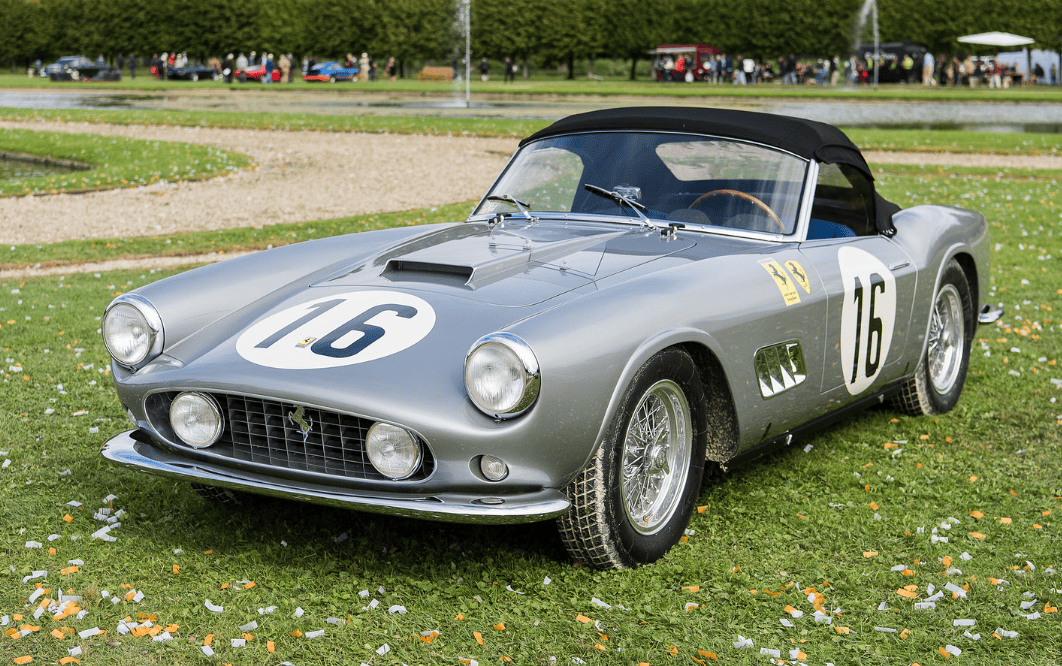
1959 Ferrari 250 GT California Spyder
The
1959 Ferrari 250 GT California Spyder is the epitome of automotive beauty and craftsmanship, blending Ferrari’s race-winning engineering with the allure of a glamorous open-top grand tourer. With just
50 units of the long-wheelbase (LWB) model built, this rare and exquisite machine stands as one of the most desirable and valuable collector cars in the world. Whether you're a seasoned collector or an enthusiast of Ferrari’s golden era, the 250 GT California Spyder offers unmatched prestige.
Performance Specs of Ferrari 250 GT
- Engine: Powered by Ferrari’s legendary 3.0-liter Colombo V12 engine, the California Spyder produces an exhilarating 240 horsepower, providing the kind of high-revving performance you expect from a Ferrari. This engine is known for its superb responsiveness and smooth power delivery, making it as thrilling today as it was in 1959.
- Quarter-Mile Time: The 250 GT California Spyder could complete the quarter-mile in approximately 14.3 seconds—blistering speed for a grand tourer in its time. Its light weight and racing pedigree ensured it was more than just a beautiful machine; it was built to perform.
- Transmission: Equipped with a 4-speed manual transmission, the California Spyder offers a tactile and engaging driving experience, putting full control of the V12 engine at your fingertips. Every gear change feels purposeful, connecting you to the car’s race-bred heart.
Design & Style of Ferrari 250 GT
- Timeless Body Design: The California Spyder’s body was designed by Pininfarina and built by Scaglietti, two legendary Italian names in automotive design. Its long hood, short rear deck, and sweeping lines make it one of the most beautiful Ferraris ever built. Whether the top is up or down, its silhouette remains iconic.
- Convertible Glamour: The Spyder was designed for driving under the open sky, and few cars capture the spirit of open-top grand touring like this one. The convertible top folds back smoothly, and once it's down, the car transforms into the ultimate expression of elegance.
- Color Options: The 250 GT California Spyder was available in an array of striking colors, including Rosso Corsa (Ferrari Red), Blu Scuro, and Giallo Fly (Yellow), paired with luxurious interiors finished in leather and wood accents. Every detail exudes class and exclusivity.
- Race-Inspired Features: While it’s a grand tourer, the California Spyder shares much of its DNA with Ferrari’s race cars, including lightweight aluminum panels, a rear live axle, and four-wheel drum brakes. This makes it not only a head-turner but also a serious performer on the road.
Why Buy a of Ferrari 250 GT in 2024-2025?
- Exclusivity & Prestige: With only 50 long-wheelbase California Spyders produced, ownership of one of these cars is an invitation into the upper echelon of automotive collectors. Prices for this model have exceeded $10 million at auction, and its value continues to appreciate as Ferrari’s heritage becomes even more coveted.
- Racing Pedigree: Born from Ferrari’s success on the track, the 250 GT California Spyder wasn’t just built for looks—it was designed for high performance. The car’s race-tuned suspension and lightweight construction allow it to deliver an exhilarating driving experience. It’s not just a showpiece; it’s meant to be driven.
- Hollywood History: The 250 GT California Spyder is more than just a car—it’s a symbol of Hollywood glamour. One of the most famous owners of this model was James Coburn, a screen legend, further cementing its place as the ultimate status symbol. The car’s timeless appeal has made it a favorite among movie stars and collectors alike.
- Investment Potential: As Ferrari continues to dominate the collector car market, the 250 GT California Spyder remains a wise investment. With its combination of rarity, performance, and beauty, this Ferrari has consistently seen its value rise, making it a coveted asset in any collection.
The 1959 Ferrari 250 GT California Spyder is not just a car—it’s the pinnacle of Italian automotive art and engineering. With its breathtaking design, legendary V12 engine, and timeless appeal, the California Spyder represents the very best of Ferrari’s golden age. For those seeking the ultimate in luxury, performance, and exclusivity, this Ferrari is the definitive choice for 2024-2025.
Issues with the Ferrari 250 GT:
Engine Overheating: The V12 engine in the 250 GT California Spyder is a masterpiece, but it is known for overheating, especially in traffic or during hot weather. The cooling system often needs to be upgraded for modern use.
Transmission Issues: Shifting can be difficult in these Ferraris, particularly when the gearbox is cold. Owners often complain of stiff gear changes, especially from first to second.
Timing Chain Wear: The Ferrari V12 engines of the era used timing chains that could wear out over time, leading to poor performance and potential engine damage if not maintained properly.
Rust in the Frame and Body: Despite their value today, these Ferraris weren’t immune to rust, particularly in the sills, floor pans, and frame. Rust prevention and treatment are critical to preserving the value of these cars.
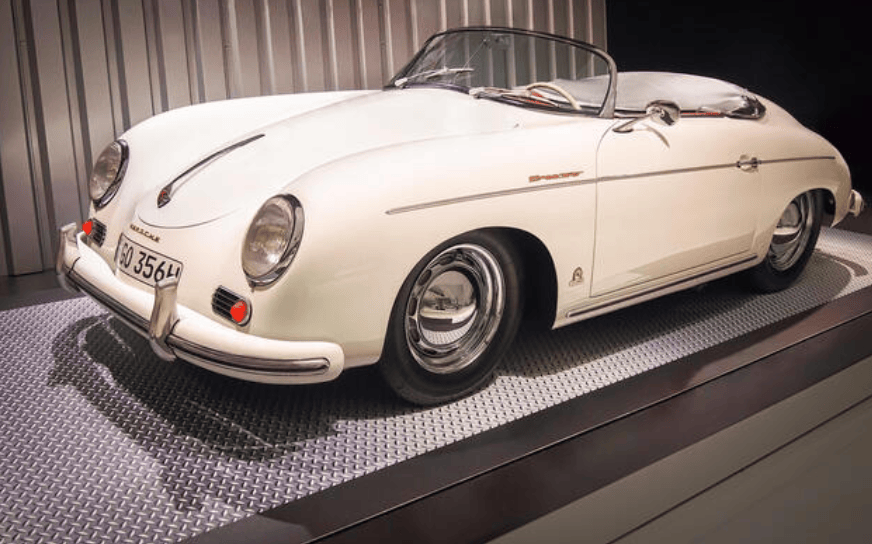
1955 Porsche 356 Speedster
The 1955 Porsche 356 Speedster is an iconic blend of minimalist design, lightweight performance, and open-top driving pleasure. Known for its sleek, low-profile body and race-proven engineering, the Speedster quickly became a favorite among driving enthusiasts and collectors alike. With its simple yet timeless aesthetic, the 356 Speedster stands as one of the most sought-after models in Porsche’s storied history.
Performance Specs
- Engine: The 356 Speedster is powered by a 1.5-liter flat-four "boxer" engine, delivering 60 horsepower. While the output may seem modest, the Speedster’s lightweight body and perfectly balanced handling more than made up for it, offering a thrilling and nimble driving experience.
- Quarter-Mile Time: Despite its relatively small engine, the Speedster could cover the quarter-mile in around 19.0 seconds, an impressive feat for its era. Its agility and responsiveness were key selling points, making it an ideal choice for spirited driving on winding roads.
- Transmission: The 356 Speedster featured a 4-speed manual transmission, which provided precise and direct shifts, allowing drivers to feel fully connected to the car. The lightweight chassis and excellent weight distribution made it a joy to drive, whether on the road or track.
Design & Style
- Minimalist Body Design: The 356 Speedster is famous for its low-cut windshield, sleek curves, and minimalist styling. This stripped-down design was inspired by Porsche’s racing roots and was intended to deliver an engaging driving experience. With its lightweight aluminum and steel body, the Speedster embodied the less-is-more philosophy.
- Open-Top Driving: Designed to deliver pure driving pleasure, the Speedster came with a simple, manually operated fold-down soft top, perfect for sunny weekend drives. The open-air experience makes the car feel even more alive as you feel the wind and hear the sound of the iconic Porsche engine.
- Color Options: Popular original colors included Signal Red, Ivory White, and Speedster Blue, all complemented by a spartan yet elegant interior featuring simple leather seats and minimal trim. The interior focused on functionality, letting drivers fully engage with the car.
- Lightweight Build: Weighing just over 1,700 pounds, the Speedster’s lightweight construction allowed for agile handling and quick acceleration. Its compact design made it perfect for tight corners and quick maneuvers, creating a direct and thrilling connection to the road.
Why Buy in 2024-2025?
- Exclusivity & Value: While over 4,000 Porsche 356 Speedsters were produced between 1954 and 1958, the 1955 model holds a special place in the hearts of collectors. Known for its purity of design and driving experience, prices have steadily increased, with auction prices reaching over $500,000. Its rarity and timeless design make it a valuable asset for collectors in 2024-2025.
- Timeless Driving Experience: The 356 Speedster isn’t just a beautiful car—it’s a joy to drive. Its lightweight build and nimble handling provide an unparalleled driving experience that modern sports cars can’t replicate. Whether you’re cruising through the countryside or participating in a classic rally, the Speedster delivers thrills every time.
- Racing Heritage: Born from Porsche’s success in racing, the 356 Speedster was designed to be lightweight and quick, making it a popular choice among amateur racers in the 1950s. That legacy continues today, with collectors and enthusiasts cherishing the car for its race-proven pedigree.
- Pop Culture Appeal: The 356 Speedster became an icon of cool in the 1950s and ’60s, famously driven by celebrities like James Dean and Steve McQueen. This pop culture connection, combined with its undeniable charm, has only increased its desirability among modern collectors.
- Investment Potential: The Speedster’s value has steadily appreciated over the years, making it a sound investment for 2024 and 2025. With its combination of heritage, rarity, and driving pleasure, it’s a car that will continue to appreciate in value for decades to come.
Owning a 1955 Porsche 356 Speedster is like owning a piece of automotive art. With its simple, timeless design and engaging driving dynamics, the Speedster offers both an exhilarating driving experience and a solid investment opportunity. For collectors looking to capture the essence of Porsche’s early years, the 356 Speedster is the ultimate prize.
Common Issues with the 1955 Porsche 356 Speedster
Engine Oil Leaks: The air-cooled engines in the Porsche 356 were notorious for oil leaks, especially around the valve covers and crankshaft seals.
Electrical Issues: The 6-volt electrical system used in early models was underpowered by modern standards, causing frequent issues with starting and dim lighting.
Transmission Synchro Problems: The early 356 models had non-synchromesh gearboxes, making them difficult to shift smoothly. Even the later synchromesh models could wear down quickly and cause grinding during shifts.
Rust Issues:
Like many cars of its era, the Porsche 356 was susceptible to rust, particularly in the lower panels, floor pans, and battery box area.
Fast, FREE, Quotes
blog request
We will get back to you as soon as possible.
Please try again later.
You might also like
Book a Service Today
We will get back to you as soon as possible
Please try again later
Quick & Reliable
Quick quotes, quick repairs, seamless 24/7/365 drop offs and pick-ups.
Location
Call
#1 Reno Mechanic specializing in transmissions, electrical, AC Repair, exotic and collector vehicles. Full inspections, maintenance, and repairs.
Privacy Policy Link
Terms of Use
Services
Working hours
- Mon - Thu
- -
- Friday
- -
- Sat - Sun
- Closed
All Rights Reserved | MAPT Automotive
Website and Digital Marketing by Talents Into Profits (TIP)
